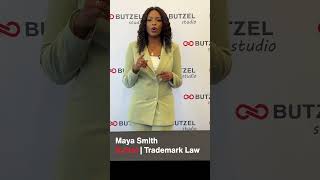New Opportunities for Public Comments on Auto Parts, Steel, and Aluminum Tariff Inclusions and USMCA Review
On September 17, 2025, the US Government published three significant Federal Register notices that reflect evolving US trade policy and enforcement priorities across key sectors. These developments include the launch of a new process to request that automobile parts be included in the 25% Section 232 tariffs, the opening of the September submission window to request that derivative steel and aluminum products be included in the 50% Section 232 tariffs, and the upcoming 2026 joint review of the United States-Mexico-Canada Agreement (USMCA).
Companies in the automotive sector; companies that buy, sell, or import products containing steel or aluminum; and companies with interests in North American trade should review these notices closely and consider submitting appropriate comments or inclusion requests before the relevant deadlines.
These are opportunities for companies to submit comments in support of the continued importance of the USMCA to integrated supply chains and/or in opposition to the expansion of the tariffs to additional products.
With elevated tariff levels as the new normal, however, the inclusion request processes also present an opportunity for companies to play offense by seeking tariffs on additional products as a competitive advantage to promote domestic production and sourcing or target products that are imported by competitors. Indeed, many companies are already doing just that, as requests submitted during the first steel and aluminum inclusion process resulted in a broad expansion of the products subject to tariffs.
Accordingly, companies should carefully consider their strategies for responding to these opportunities and should be prepared for the possibility that any products that could conceivably be considered auto parts and products containing any steel or aluminum might be added to the tariffs.
1. Section 232 Automobile Parts Tariff Inclusion Requests Open Oct. 1-15, Comments on Process Due Nov. 3
The Adoption and Procedures of the Section 232 Automobile Parts Tariff Inclusions Process interim final rule of September 17 established a process for the Department of Commerce’s International Trade Association (ITA) to request additional auto parts articles be included in the Section 232 tariffs on automobile parts imposed under Presidential Proclamation 10908 of March 26, 2025, Adjusting Imports of Automobiles and Automobile Parts in the United States, 90 Fed. Reg. 14,705 (Apr. 3, 2025). (Interestingly, a different office within the Commerce Department, the Bureau of Industry and Security (BIS), promulgated this interim final rule and has administered all other aspects of the Section 232 tariffs, including the steel and aluminum tariffs and inclusion requests.)
Under the new interim final rule, domestic producers of automobiles or automobile parts articles, or any industry association representing one or more such producers, may submit automobile parts articles inclusion requests during two-week submission windows that ITA will open four times annually each January 1, April 1, July 1, and October 1. The first window will be open from October 1 to 15, 2025. Submissions of inclusions requests must be submitted in PDF format via email to AutoInclusions@trade.gov.
Inclusion requests must include:
- Clear identification of the requestor (e.g., a producer of an automobile or automobile parts article, or an industry association of such producers);
- A precise description of the automobile parts article that is the subject of the request;
- The eight or ten-digit Harmonized Tariff Schedule of the United States (HTSUS) classification requested to be included in the scope of the tariffs;
- An explanation of why the article is an automobile parts article;
- Pertinent information on the domestic industry affected;
- Statistics on imports and domestic production;
- A description of how and to what extent imports of the article have increased in a manner that threatens to impair national security or otherwise undermines the objectives set forth in the presidential proclamations regarding a threatened impairment to the national security caused by imports of autos and auto parts;
- Any business confidential submissions must also include a non-confidential public version; and
- All information submitted must be limited to 30 pages inclusive of all attachments.
Following the submission period, ITA will post a non-confidential version of each valid request on regulations.gov and open for public comment for 14 days. ITA will begin analysis of each accepted inclusion request concurrently with the start of the public comment window.
ITA will assess each inclusion request for: (1) whether the described product at the eight- or ten-digit HTSUS classification is an auto part; and (2) whether imports of such product have increased in a manner that threatens to impair national security or otherwise undermines the objectives set forth in the presidential proclamations addressing the threatened impairment to the national security. ITA will determine whether to add the auto part within 60 days of posting the request.
In addition, comments on the auto parts inclusion request process itself are due on November 3, 2025.
2. 2nd Section 232 Steel and Aluminum Tariff Inclusion Requests Open Sept. 15-29
There is already a similar process for companies to request that steel and aluminum derivative products be included in the Section 232 tariffs. See Adoption and Procedures of the Section 232 Steel and Aluminum Tariff Inclusions Process, 90 Fed. Reg. 18,780 (May 2, 2025). According to a BIS notice published on September 17, the second window for inclusion requests for derivative aluminum and steel articles started on September 15, 2025, and closes on September 29, 2025. Requests must be submitted to DIBPrograms@bis.doc.gov.
The requestor must provide:
- Clear identification of the applicant (e.g., individual, company, or trade association);
- A precise definition of the derivative article;
- The eight or ten-digit HTSUS classification requested to be included in the scope of the tariffs;
- An explanation of why the article is a steel or aluminum derivative article, including, to the extent practicable, information on the total value of the article’s steel and/or aluminum content as a share of the derivative article’s total value;
- Pertinent information on the domestic industry affected;
- Statistics on imports and domestic production;
- A description of how and to what extent imports of the derivative article threaten to impair national security or otherwise undermine the objectives set forth in the 2018 Steel and Aluminum Section 232 investigation reports or related Inclusions Proclamations;
- Any business confidential submissions must also include a non-confidential public version; and
- All information submitted must be limited to 30 pages inclusive of all attachments.
BIS will assess each inclusion request for: (1) whether the described product at the eight- or ten-digit HTSUS classification is a derivative steel or aluminum article; and (2) whether such derivative article imports have increased in a manner that threatens to impair the national security or otherwise undermine the objectives set forth in the Section 232 investigation reports or related Inclusions Proclamations.
Following the first window for submissions, on August 18, 2025, BIS added more than 400 HTSUS codes to the lists of steel and aluminum products subject to the Section 232 tariffs. The newly added items include, among other things, motorcycles, truck trailers and certain car parts, steel containers for a variety of products, industrial robotics, and machinery for lifting, handling, loading, and unloading. These inclusions signal that products that contain any amount—even only a small portion—of steel or aluminum could become subject to the Section 232 tariffs.
Designated steel and aluminum derivative products are subject to Section 232 tariffs only on the value of the steel or aluminum content. Companies must break out and report the value of the steel/aluminum content versus the non-steel/aluminum content on their entry documents, and then pay the 50% tariff on the value of the steel/aluminum content. The value of the steel/aluminum content is exempt from the reciprocal tariffs, but the value of the non-steel/aluminum content is subject to the reciprocal tariffs.
3. USMCA Review Comments Due Nov. 3 & Public Hearing Nov. 17
The USMCA requires the United States, Canada, and Mexico to meet on the sixth anniversary of the entry into force of the agreement to conduct a joint review of the operation of the agreement. The first joint review meeting should take place on July 1, 2026. The USMCA has a “sunset provision” that requires the agreement to end in 16 years if the United States, Canada, and Mexico do not agree to extend the agreement for another 16 years, which makes these review meetings important to help the countries decide if they will continue with the agreement.
As part of the review process the Office of United States Trade Representative (USTR) has requested public comments and requests to participate in a hearing be submitted by November 3, 2025, and has scheduled a hearing for November 17, 2025. The USTR is specifically seeking comments on:
- Any aspect of the operation or implementation of the USMCA.
- Any issues of compliance with USMCA.
- Recommendations for specific actions that USTR should propose ahead of the Joint Review to promote balanced trade, new market access, and alignment on economic security with Mexico and Canada.
- Factors affecting the investment climate in North America and in the territories of each member country (e.g., United States, Mexico, and Canada), as well as the effectiveness of the USMCA in promoting investment that strengthens US competitiveness, productivity, and technological leadership.
- Strategies for strengthening North American economic security and competitiveness, including collaborative work under the Competitiveness Committee, and cooperation on issues related to non-market policies and practices of other countries.
Companies should ensure that they emphasize the importance of continuing with this agreement in any comments that they submit. Small businesses should identify themselves as small businesses when providing comments. Comments and requests to appear at the hearing can be submitted here.
4. Conclusion
Timely engagement—whether through public comments or inclusion requests—is essential to ensure business interests are represented and to help shape the evolving trade landscape. Stakeholders should act swiftly to meet submission deadlines and prepare for potential impacts on supply chains and market access. The Butzel Automotive and Tariffs groups are available to assist in dealing with tariffs and related issues. For more information, please contact the authors of this Client Alert or your Butzel attorney.
Jennifer M. Smith-Veluz
202.454.2885
smithveluz@butzel.com
Catherine M. Karol
313.225.5308
karol@butzel.com
Mitchell Zajac
313.225.7059
zajac@butzel.com
Kristina Pedersen
734.213.3601
pedersen@butzel.com














